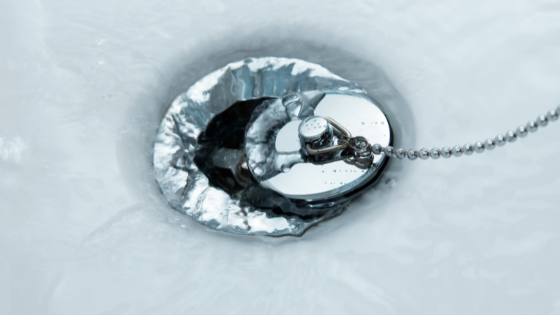Bathroom and kitchen sinks see frequent use on a regular basis, increasing the chances of problems, such as slow draining. Soap scum, hair, and debris can clog the drain and require cleaning. Here are a few ways to clear a slow sink drain.
- Use a Zip-it tool to clear away debris.
A Zip-it tool is a plastic wand that easily catches hair and debris when pulled out of the drain. It is thin enough to fit into a drain even with a pop-up in place. It’s safe and easy to use.
- Remove the pop-up.
If you don’t have a Zip-it tool, or if you’re unable to clear all the debris away with it, removing the pop-up could be the next step. Reach behind the drain pipe under the sink to remove the pop-up nut. Then, pull out the pop-up, clean it, and reinstall.
- Use a homemade drain cleaner.
Avoid store bought drain cleaners with harsh chemicals. Instead, create a homemade drain cleaner with baking soda and vinegar. Begin by removing the sink stopper and pour boiling water down the drain. Pour ½ cup baking soda into the drain and then ½ cup vinegar. Cover the drain with a stopper and let the cleaner work for 10 minutes. Then, add more boiling water to wash away any clogs. Flush the drain with hot tap water to remove the remaining cleaner and debris. Repeat, if necessary.
- Clear the sink overflow.
The sink overflow diverts water into the drain if it rises too high in the sink, but also allows air into the drain, helping water drain faster. Debris may build-up in the sink overflow and slow down draining. Clean it out regularly to prevent draining problems.
- Use a plunger.
A plunger can help loosen and dislodge hair and debris trapped in the pipe. Be sure to cover the sink overflow before plunging to create a seal.
If these methods fail to address a drainage problem, there may be a serious underlying cause. Call Tucker Hill for professional plumbing service.

